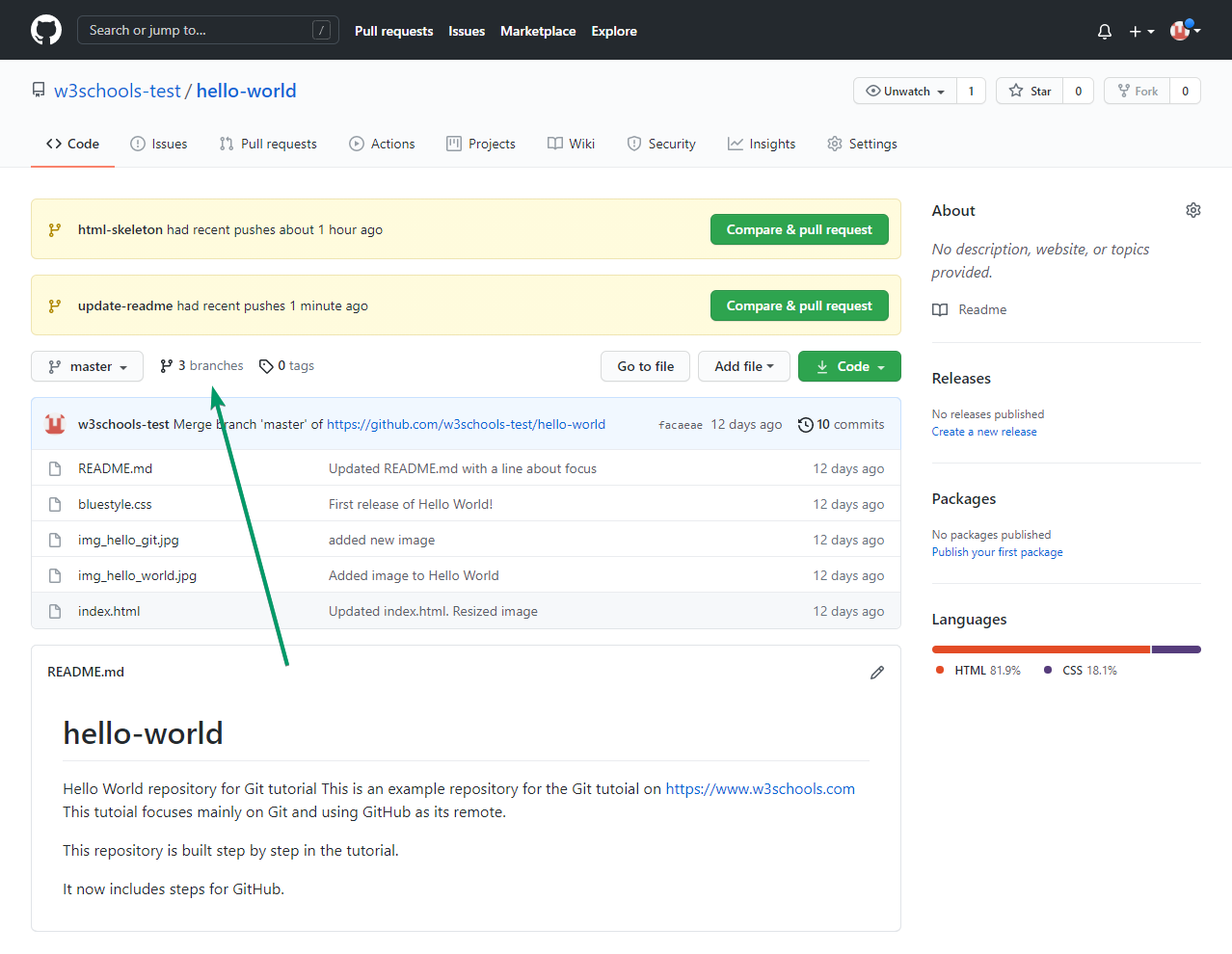
It will not delete it from the local repository. The command will delete the master branch in the remote repository. Change the default branch to the placeholder and return to the command line.
BRANCH TO MASTER GIT UPDATE
(In particular, the fetch step run by pull brings over only origin/master, and it does not update the ref in your repo:1 any new commits winds up referred-to only by the special FETCH_HEAD reference. Tap on the Settings icon, and select Branches from the menu on your left. So this is almost the same as doing the two steps by hand, but there are some subtle differences that probably are not too concerning to you. The pull command instructs git to run git fetch, and then the moral equivalent of git merge origin/master.

A developer can delete, rename and even re-create the master branch after it's deleted, just like any other Git branch. You can insert -no-ff or -ff-only to prevent a fast-forward, or merge only if the result is a fast-forward if you like. The master branch is no different than any other branch in a cloned Git repo, except that historically it's been the default name used when the first branch is created. Sometimes this is only useful for Warm Fuzzy Feelings ("ah, yes, that is in fact what I want") and sometimes it is useful for changing strategies entirely ("whoa, I don't want THAT stuff yet").įinally, the merge command takes the given commit, which you can name as origin/master, and does whatever it takes to bring in that commit and its ancestors, to whatever branch you are on when you run the merge. They get traced to your repository, but named origin/branch for any branch named branch on the remote.Īt this point, you can use any viewer like git log, gitk, etc to see "what they have" that you don't, and vice versa.

The named remote (origin) and says to it: "gimme everything you have that I don't", i.e., all commits on all branches.

The fetch command can be done at any point before the merge, i.e., you can swap the order of the fetch and the checkout, because fetch just goes over to No matter which branch you are currently working in, you can always run the same command to get back to master: git checkout master. Git fetch origin # gets you up to date with the origin Git checkout dmgr2 # you have reached and are currently into " branch dmgr2" The steps you listed will work, but there's a long way that gives you more options:


 0 kommentar(er)
0 kommentar(er)
